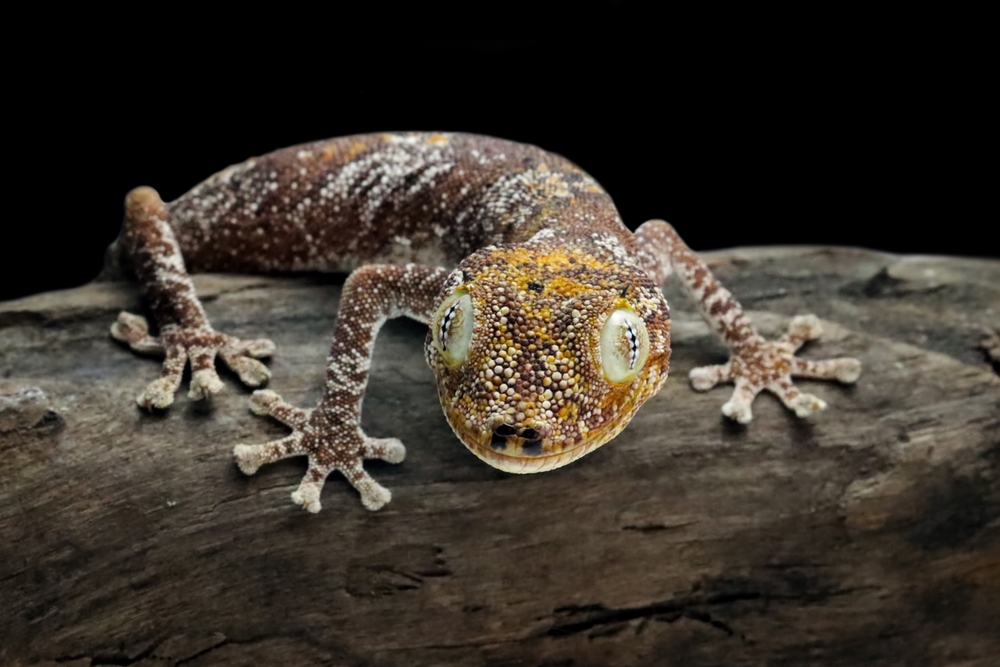The Strophurus genus contains some of the most beautiful lizards on the planet. These tiny Australian geckos, with their considerate movements, delicate frame and striking colour contrasts, are mesmerizing reptiles. Some members of the genus are adorned with spines, while others have evolved highly specialized plant-mimicking camouflage. It is for these reasons that the common names “spiny-tailed” and “phasmid” have been used to categorise the 20+ species of Strophurus. Whilst still reasonably rare in the hobby, increased breeding success has allowed more keepers to obtain these unique animals through legal channels, making the pooling of information on the care and keeping of spiny-tailed geckos more important than ever.
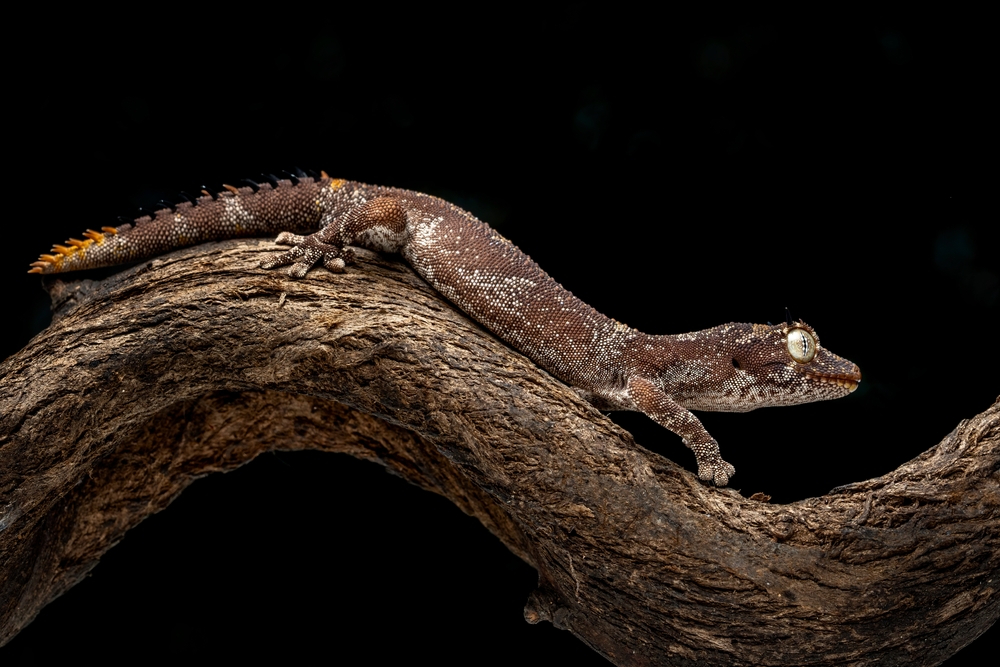
Spiny-tailed gecko species and legality of keeping
All species of Strophurus are endemic to Australia, a country that has never permitted the export of wildlife. This makes the introduction of new species into European markets highly problematic. However, for many years, a select few breeders have produced small numbers of niche Australian species, including Strophurus geckos, and growing success in keeping and breeding several species, has increased their availability. This means that acquiring animals legally and more ethically has become far easier. It is for this reason that articles and information on their care and keeping should be shared to ensure that high welfare standards are met.
The species most seen in the hobby are the Northern spiny-tailed gecko (S. ciliaris) and the golden spiny-tailed gecko (S. taenicauda). These are produced regularly as captive-bred animals in both Europe and the US. Keepers should always be critical of the source of other species that are not so frequently bred, particularly if sourcing adult specimens at a high asking price. Choosing to ignore unscrupulous actions or justifying it with the sentiment of “if I don’t buy this animal, someone else will” facilitates the continuation of the illegal wildlife trade.


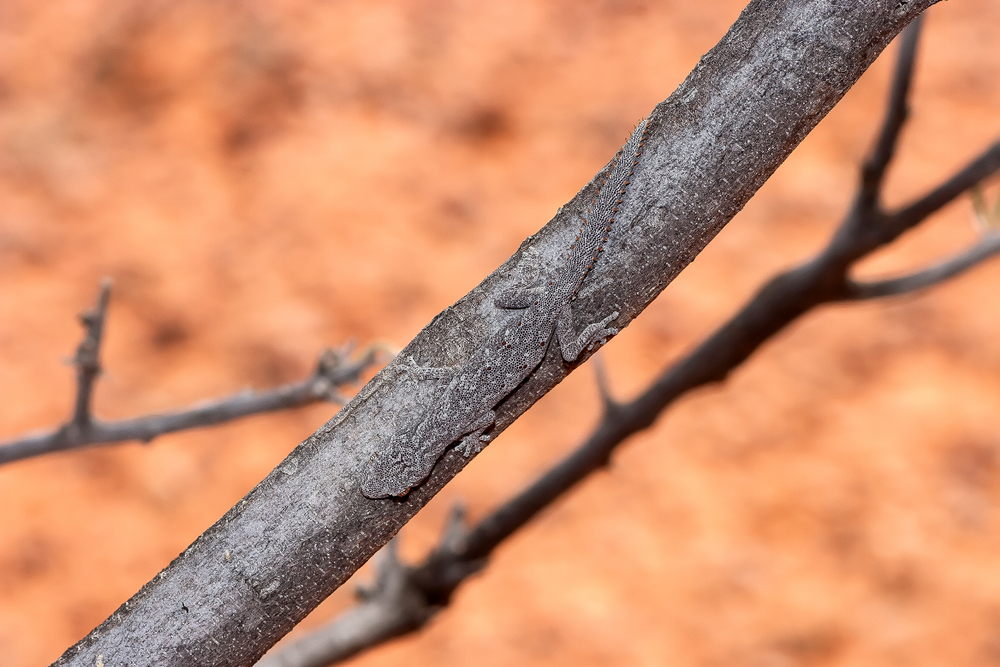
The Strophurus genus
There are currently 21 species in the Strophurus genus. They inhabit a wide range of microhabitats but are typically found in arid, semi-arid and subtropical shrubland regions stretching from the West coast of Western Australia, over the “top end” and across most of northeast Australia except the Cape York Peninsula.
These geckos occupy spinifex tussocks, savannah grasses and other low-lying shrubs. In these regions environmental conditions can be harsh, often exceeding 40℃ and dropping below 15℃. Tropical storms can bring intense downpours and seasonal droughts can halt rain for weeks on end. Even the UVI readings in Western Australia are some of the highest in the world. Of course, each species will face very different environmental challenges, but their deceivingly delicate disposition is well adapted to volatile weather conditions.
Perhaps the most famous aspect of Strophurus behaviour is their defence strategy. All members of the genus can produce a highly adhesive liquid from their tails and project this up to 50cm towards antagonists. This allows them to retain their position camouflaged within spinifex grass, rather than escaping into shelter like more terrestrial lizards. This unique defence method has only evolved twice in Gekkota. The chameleon geckos (Eurodactylodes sp.) of New Caledonia (also members of the Diplodactylidae family) are the only other reptiles that use this sticky liquid as a defence.
The largest of the Strophurus geckos is the Northern spiny-tailed gecko. Females of this species can reach up to 9cm (SVL), with their tails measuring a further 8cm. The smallest is the Jewelled gecko (Strophurus elderi), which measures around 4cm (SVL) with their tails measuring another 5cm.
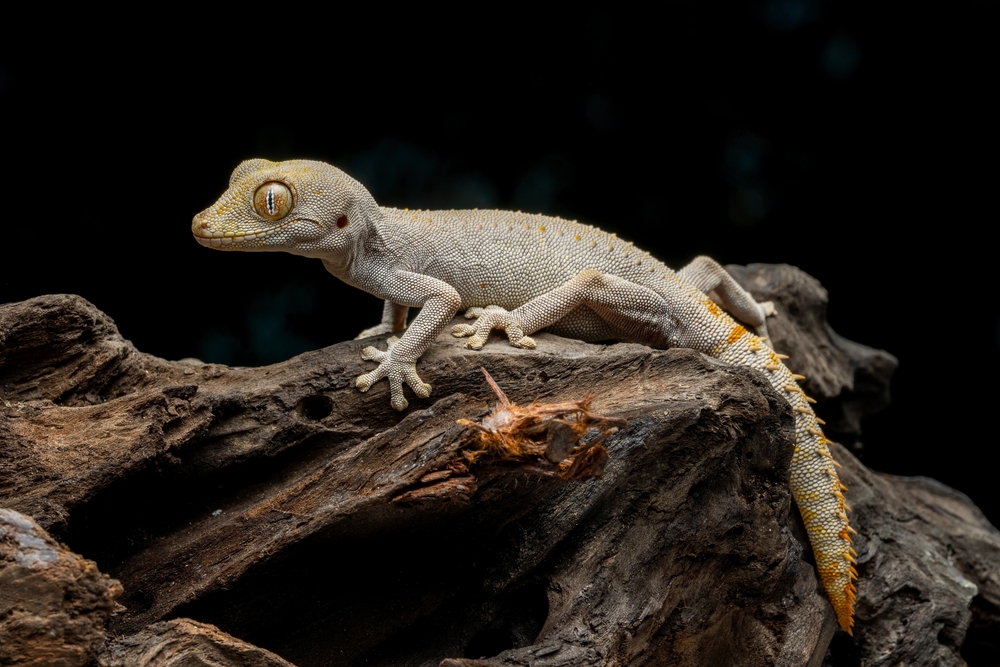
Spiny-tailed geckos
(S. krisalys, S. ciliaris, S. wellingtonae, S. taenicauda, S. williamsi, S. intermedius, S. rankini, S. spinigerus)
The spiny-tailed geckos are certainly the most readily available and arguably the most striking of the Strophurus genus. These species are characterized by small, spine-like scales that run in two paired rows down the animals’ tails. These spines contrast in colour (although are often a vibrant yellow or orange in most species) and are most prominent in S. ciliaris and S. wellingtonae. The spines also indicate where the animals’ glands for discharging their defensive liquid are. This, combined with a brightly coloured mouth interior for gape posturing, makes for a fearsome display should the spiny-tailed lizard feel threatened.
The most striking of the spiny-tailed geckos is the golden spiny-tailed gecko (S. taenicauda). This species is adorned with dalmatian-like spots, a vivid dorsal stripe stretching down the animal’s tail and variable, yet often vibrant red, eye colouration. The golden spiny-tailed gecko gets its scientific name from taenia meaning “band” and cauda meaning “tail”. There are also three subspecies of S. taenicauda, each found in a different locality in Queensland.
Spiny-tailed geckos generally inhabit arid regions covered with spinifex. Kluge et al have divided the Strophorus genus into scansorial (adapted to climbing) and graminoculous (adapted to inhabiting grass) groups based on their phenetic traits. The spiny-tailed geckos are scanso-arboreal as most species are adept climbers and some will climb trees. Therefore, these lizards require height in their vivaria and a wide array of sturdy branches.
Although all species occupy similar habitats, the environmental conditions experienced by S. ciliaris in Kakadu, are extremely different to that of S. assimilis in South Australia. Even within species, the more northern populations of the eastern spiny-tailed gecko (S.williamsi) will undoubtedly experience different climatic conditions to the southern populations. This makes them reasonably hardy captives providing a spectrum of microclimates and gradients are available. Spikes in humidity, fluctuations in temperature and appropriate UVI are likely to be essential for the welfare of these animals.


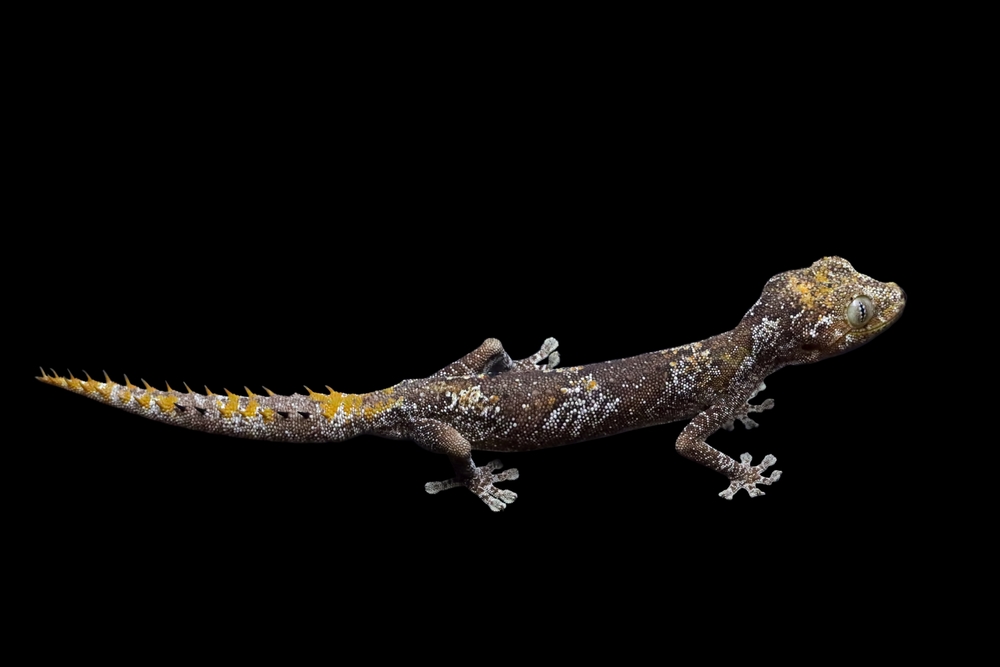
Phasmid/Lined geckos
(S. jeanae, S. horneri, S. taeniatus, S. michaelseni)
There are four species of phasmid or lined geckos in the Strophurus genus. “Phasmid” refers to the act of mimicking leaves or flora. These geckos have a similar build to other members of the genus but have evolved remarkable patterning to camouflage into the grasses they occupy. Their lateral lines break up their outline against thin grass stalks, allowing them to blend in seamlessly with the vast savannah scrub of inland Australia.
The most widespread of the phasmid geckos is S. jeanae which inhabits Western Australia and the Northern Territory. Colloquially known as the “southern phasmid gecko” (despite occupying the northern half of Australia), this gecko is well adapted to a variety of habitats. However, there are several highly localised species within this group.
The robust striped gecko (Strophurus michaelseni) has a far smaller range, occupying only the central coast and interior areas of Western Australia. As the name suggests, this is one of the bulkier species of striped gecko. The thick spinifex grass of the central coast region makes for the perfect home for this larger variety of Strophurus. Unlike S. jeanae this species does not have quite as perfect stripes, instead the pattern is broken down the lateral flanks and even some spots can be seen.
The slightest of the phasmid geckos is the Northern phasmid gecko (S. taeniatus). This animal is truly bizarre and showcases the group’s incredible ability to mimic foliage. It has an elongate body, thin limbs and bold yellow, grey and brown stripes running from the preocular scales to the tip of the tail. It would be difficult for the species to appear any more like a blade of spinifex grass and still biologically function. Being so fragile, they move mostly within grasses to hunt flying insects at night.

The Others
(S. trux, S. elderi, S. congoo)
The most recently described of any Strophurus species is the golden-eyed gecko (S. trux). Only discovered in a tiny region of Queensland in 2017, it is perhaps the least studied of all the Strophurus species. According to Gibson (2002) “The specific epithet “trux” is Latin for wild, savage, harsh and pitiless, including instruments of human savagery, and also of the scene of such cruelty (Lewis & Short 1879; Glare 1982). This name was chosen in reference to the only location known for Strophurus trux sp. nov. It is in the proximity of the “Marlborough stretch”, a section of the old Bruce Highway in central Queensland with notoriety as a wild and dangerous place in the 1960s and 1970s because of a series of murders and shootings.”
The jewelled gecko (Strophurus elderi) is a unique species of Strophurus in that it does not have a spiny tail, nor does it have lined patterns. It is considered a graminoculous species, although it will typically hide beneath spinifex tussocks and hunt in and around the tussock at night. Therefore, they can be frequently spotted on the ground exhibiting terrestrial behaviours. To the author’s knowledge, this species has yet to be bred in captivity by private hobbyists and is not available within the hobby. Therefore, keepers that encounter an opportunity to obtain this species should be extremely cautious that the animal has not been smuggled from its home range. Despite an enormous range and a “Least Concern” listing on the IUCN RedList, supporting the unregulated removal of animals from the wild, whether directly or indirectly, can seriously harm native ecosystems.
The Congoo gecko (Strophurus congoo) is perhaps the most unusual of the Strophurus genus. Described in 2016, it is unlike other members of the genus, the Congoo gecko lacks enlarged tubercles, is typically very drab in colouration and is found exclusively in Eucalypt forests. The name “Congoo” is in honour of Mr Tom Congoo, the elder of the lands in which the gecko was first discovered. Currently, this species is known only from a very small pocket of woodland in North Queensland.
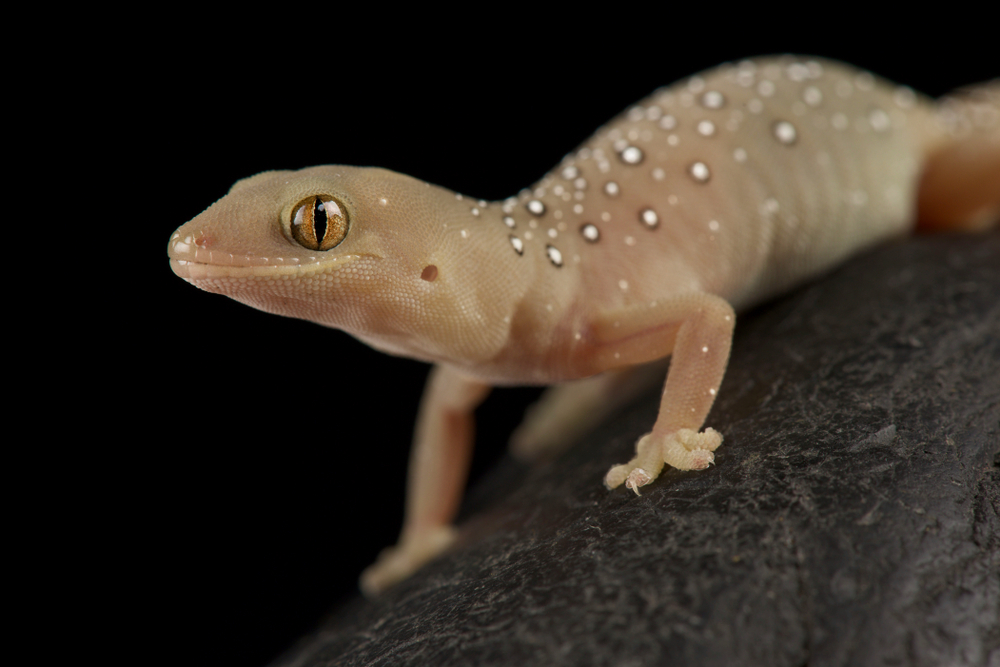
Care and keeping of spiny-tailed geckos
The most popular species within the trade, is the Northern spiny-tailed gecko. Several breeders in Europe are working with this species, which produces eggs year-round (every 3 weeks). The northern spiny tailed gecko can also produce clutches of up to 10 eggs. Therefore, improvements in husbandry and more accessible information on captive breeding has allowed for S. ciliaris to become reasonably well established in private herpetoculture. This, has almost certainly reduced the amount of trafficked specimens over the many years that northern spiny tailed geckos have been available.
Many keepers of this species opt for a 45x45x45cm glass terrarium with natural substrate, dry wood and rock hides. However, a 60x45x60cm terrarium, densely filled with thin branches and arid grasses, with a red sand substrate is more appropriate. Some rocks can be positioned to create a hide if the gecko feels particularly vulnerable or the terrarium is in a busy room, but creating a calm environment for the animal to perch within the foliage is far more naturalistic. In fact, there are many parallels that can be drawn between Strophurus and chameleon care. This general décor is appropriate for the entire genus, although temperature, humidity and UVI should be tailored to each individual species. Some species will also exhibit more nocturnal/diurnal behaviours and even within species, keepers often report individual personalities amongst their spiny-tailed geckos.
As previously mentioned, a wide range of microclimates and gradients are crucial. High temperatures should be contrasted with significant drops and low humidity should be contrasted with heavy spraying once a week and a light misting every other day. An ambient daily temperature gradient of 28℃ (bottom) – 32℃ (top) with a drop to 19 – 22℃ at night is a good way of simulating wild conditions, whilst removing the extremes. During winter, temperatures should drop by around 5℃. A strong UVI of 3 at the top of the vivarium, that gradually decreases to 2 at the bottom/beneath the thick branches/grasses will also allow the spiny tailed gecko to traverse the enclosure to fit its requirements.
Conclusion
It may come as a surprise that spiny-tailed geckos and other Strophurus species are relatively uncommon in captivity. However, it is probably also a blessing that only a handful of these beautiful species ever made it into the trade. Now they are within the hobby, their proliferation in the hands of dedicated breeders is making Strophurus geckos a realistic prospect for a range of experienced keepers.
